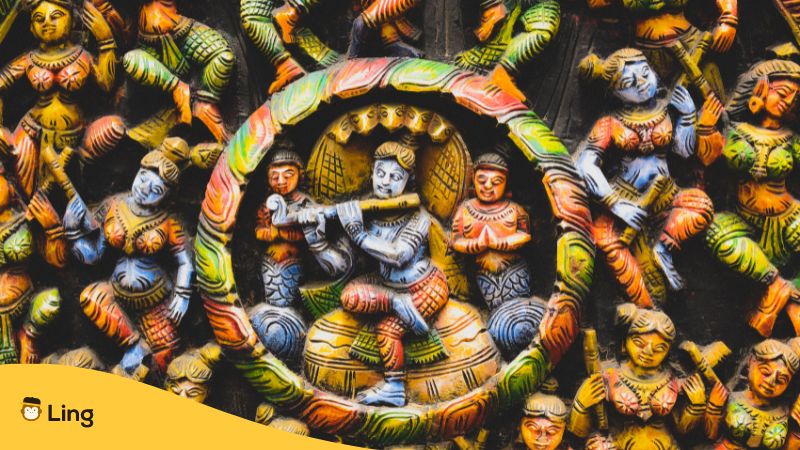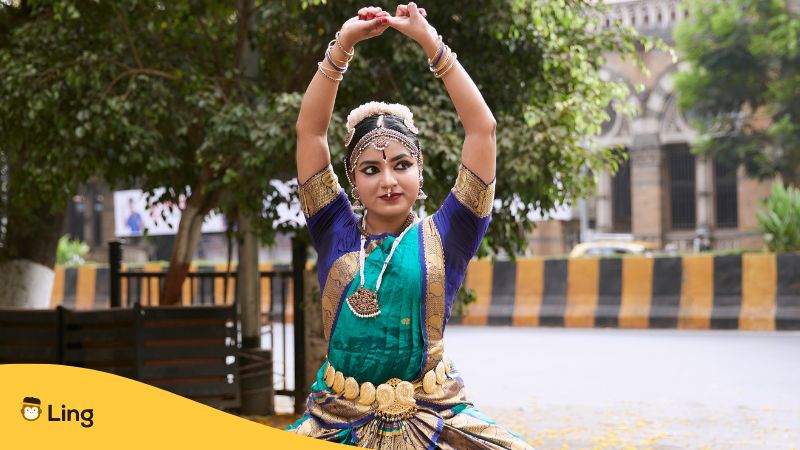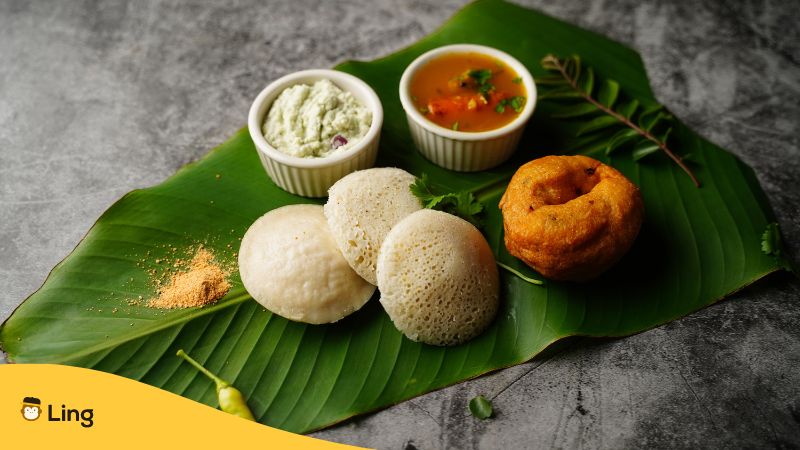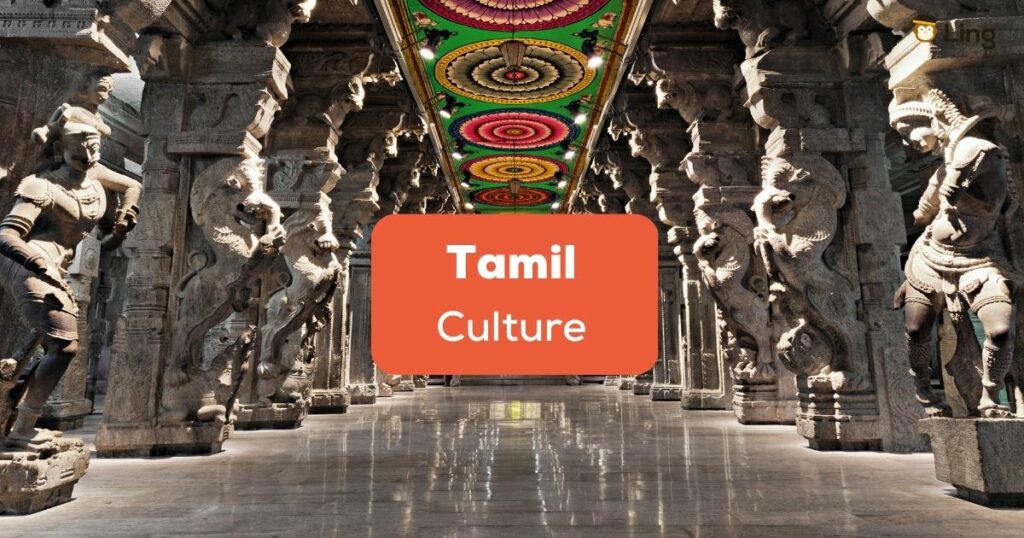Hey there, fellow readers! Today we’re diving into the fascinating world of Tamil culture (Nākarīkam – நாகரீகம்). And let me tell you, it’s not just about the delicious sambar and rasam. It won’t be an exaggeration to say that the state of Tamil Nadu is the crown jewel of South India. That’s because Tamil culture is a rich tapestry of traditions, rituals, and customs that have been passed down for generations. And it’s not confined to India alone; it also makes its presence felt in Sri Lanka, another Tamil country.
So, whether you’re a die-hard Tamilian looking to reminisce about your roots or someone who’s simply curious about this vibrant culture, buckle up and get ready for a tour de force. Ready, get, set, po! Err, po is the Tamil version of saying ‘go.’
Intriguing Aspects Of Tamil Culture
The Tamil culture is a fascinating and complex world that’s worth exploring for anyone interested in the rich diversity of human history and culture. The culture of Tamil Nadu places a strong emphasis on family values, with respect for elders and a deep sense of community being integral parts of everyday life.
It is known for its opulent artistic traditions, with various martial arts, music, dance, and literature. Tamil Nadu is home to some of the most important Hindu temples in India, and the region is known for its elaborate religious festivals and rituals. Tamil culture is also popular across the globe thanks to Tamil food, which is characterized by its rich flavors and use of spices. Tamil cuisine is diverse and includes a wide range of vegetarian and non-vegetarian dishes, as well as sweets and snacks.
So, without further ado, let’s take a sneak peek into what constitutes the rich and vibrant kaleidoscope known as Tamil culture.
#1 Tamil People
The origin of the Tamil people (Makkaḷ – மக்கள்) is a topic of much debate among historians and anthropologists. However, it’s generally believed that the Tamils are descended from the ancient Dravidian people who inhabited the Indian subcontinent. The Tamil people are thought to have migrated to the southern region of India around 2000 BCE and gradually formed distinct social and cultural identities.
Tamil Nadu also has a rich history of significant Tamil kingdoms that have ruled the region over the centuries. The Cholas were one of the most powerful dynasties in South India, known for their naval conquests and patronage of the arts. The Pandyas were another significant dynasty, known for their trade and commerce. The Pallavas were known for their architectural achievements, including the creation of the famous shore temple at Mamallapuram.

#2 Tamil Architecture
Tamil Nadu is home to some of the most beautiful and impressive examples of Dravidian architecture in India. This style of architecture (Kaṭṭiṭakkalai – கட்டிடக்கலை) originated in the region over 2,000 years ago and is characterized by its intricate carvings, towering gopurams or temple towers, and ornate sculptures.
The temples of Tamil Nadu are particularly known for their impressive architecture, with many of them dating back to the ancient Chola, Pallava, and Pandya dynasties, made under the patronage of the Tamil kings. The Brihadeeswara Temple in Thanjavur, built in the 11th century, is one of the most impressive examples of Tamil architecture, with its towering gopuram and intricate carvings.
In addition to temples, Tamil Nadu is also known for its impressive forts, palaces, and other architectural structures. The Padmanabhapuram Palace, located in the Kanyakumari district, is one of the most impressive palaces in Tamil Nadu, with its intricate wood carvings and beautiful gardens.
#3 Tamil Religion
Tamil religion (Matam – மதம்) is predominantly Hinduism, with a significant minority of Christians and Muslims. Hinduism has a long history in Tamil Nadu and has been deeply integrated into the culture and society of the region. The Tamils have their own unique tradition of Hinduism, which is characterized by its emphasis on Pakti (பக்தி), or devotion, and the worship of local deities.
Christianity was introduced to Tamil Nadu by Portuguese missionaries in the 16th century, and Islam arrived in the region during the 7th century. Both religions have their own unique traditions and practices that have been adapted to the local Tamil culture over the centuries.
#4 Tamil Beliefs & Traditions
Tamil beliefs and traditions are deeply rooted in the culture and history of the Tamil people. The Tamils worship a wide variety of gods and goddesses, including local deities, and place a strong emphasis on bhakti or devotion. Many ancient practices such as Yoga (Yōkā – யோகா), meditation, and Āyurvētam (ஆயுர்வேதம்) – an ancient medicinal practice – are also a part of Tamil culture.
Festivals are an important part of Tamil culture, with many unique celebrations that take place throughout the year. The most well-known festival is Pongal, a harvest festival that marks the beginning of the Tamil month of Thai. Other festivals include Diwali, Navaratri, and Tamil New Year.

#5 Tamil Language
The Tamil language (Moḻi – மொழி) is one of the oldest and most unique languages in the world, with a rich literary tradition that spans centuries. It’s a Dravidian language and has a unique script of its own. The language has had a profound impact on Tamil culture, and many ancient literary works, including poetry, epics, and philosophical texts, have been written in Tamil. Modern-day spoken Tamil is also one of the few languages that have managed to survive and thrive despite centuries of colonialism and political upheaval. Today, the language continues to thrive and is considered an important part of Tamil identity.
#6 Tamil Literature
Tamil literature (Ilakkiyam – இலக்கியம்) is one of the oldest and most extensive literary traditions in India, with a rich history dating back more than 2,000 years. The literature in the Tamil language has evolved over time, with different periods and genres reflecting the cultural and historical contexts of their time.
The Sangam literature, which dates back to the 3rd century BCE to the 3rd century CE, is one of the most important works of Tamil literature. It includes a collection of poems and songs that reflect the social, political, and cultural life of the ancient Tamil society.
The medieval period of Tamil literature saw the rise of devotional poetry, with works such as the Tirumurai and the Divya Prabandham becoming important works in the Hindu religious tradition. The modern period of Tamil literature, which began in the 19th century, saw the rise of Tamil prose fiction and the emergence of Tamil newspapers and magazines.
#7 Tamil Music
Tamil music (Icai – இசை) is a rich and diverse musical tradition that has been an integral part of Tamil culture for centuries. The music of ancient Tamil people has evolved over time and has been influenced by various musical traditions, including Indian classical music, folk music, and Western music.
Carnatic music, a classical Indian music tradition, is particularly popular in Tamil Nadu, and many famous Carnatic musicians have come from the region. The music is characterized by its complex rhythms and intricate melodies, and it is often performed using traditional instruments such as the veena, mridangam, and ghatam.

#8 Tamil Dance
Tamil Nadu is known for its rich tradition of classical and folk dances, which are an integral part of Tamil culture. Bharatanatyam is one of the most well-known classical dance forms in India, with its origin in Tamil Nadu. The dance (Naṭaṉam – நடனம்) is known for its graceful movements and intricate footwork, and it is often accompanied by Carnatic music.
Folk dances are also popular in Tamil Nadu, with each region having its own unique dance traditions. Karagattam is a folk dance that is performed with pots balanced on the head, while Kavadi Attam is a dance that is performed while carrying a decorated pole on the shoulders. Mayil Attam, or peacock dance, is another popular folk dance that is performed by women.
In addition to these traditional dance forms, Tamil Nadu is also known for its film industry, which has produced many popular dance sequences in Tamil films. These dances often combine elements of classical and folk dance with modern choreography.
#9 Tamil Films
Tamil cinema, also known as Kollywood, is one of the largest film industries in India, producing films in the Tamil language. The industry has a rich history dating back to the early 1900s, with the production of the first silent film, Keechaka Vadham, in 1916.
The industry has since grown to produce a wide variety of films, including romantic comedies, action films, and historical dramas. Tamil cinema is known for its colorful and vibrant cinematography, catchy music, and larger-than-life storylines.
Tamil cinema has produced many iconic actors and actresses, including Rajinikanth, Kamal Haasan, and Sridevi. The industry has also produced many acclaimed directors, such as Mani Ratnam and Shankar. A. R. Rahman is the shining jewel of the Tamil film-music industry.
Tamil cinema has a dedicated fan base not just in India but also across the world, with many films being dubbed into other languages for wider release.
#10 Tamil Clothing
The traditional clothing for men is called the Vēṣṭi (வேஷ்டி), which is a long cloth draped around the waist and legs. On the other hand, women wear a saree, a long drape of cloth that is wrapped around the waist and over the shoulder.
Jewellery is an important part of Tamil culture, and women often wear a variety of gold pieces, including necklaces, earrings, bracelets, nose pins, and bangles. The designs are often intricate and detailed, with many pieces featuring precious stones such as diamonds, rubies, and emeralds. The Tāli (தாலி), a sacred thread or necklace, is an important piece of jewelry for married women, and it is believed to symbolize the bond between husband and wife.
You can always spot a Tamil mother in a crowd from her brightly colored Kāñcīvaram (காஞ்சீவரம்) silk saree with intricate embroidery done in gold threads, donning gold nose pins, and wearing fresh jasmine flowers in her hair, called a Kajrā (கஜ்ரா).

#11 Tamil Food
Tamil cuisine (Uṇavu – உணவு) is characterized by its use of spices and herbs, which are believed to have medicinal properties. Rice is a staple in Tamil food too, and many dishes are made with rice as the main ingredient. Vegetarian dishes are also common, and the cuisine places a strong emphasis on the use of fresh ingredients.
One of the most popular dishes is dosa, a crispy crepe made from fermented rice and lentil batter, which is usually served with sambar and chutney. Another popular dish is idli, a steamed cake also made from fermented rice and lentil batter. Other notable dishes include biryani – a rice dish cooked with spices and meat or vegetables, and rasam – a spicy soup made with tamarind, tomatoes, and spices.
Tamil Nadu is also known for its sweets and desserts, with dishes such as payasam – a sweet rice pudding, and mysorepak – a sweet made from gram flour, ghee, and sugar.
Discover Tamil With Ling
That was just a cursory glance at the beautifully rich Tamil culture. There is so much more to the Tamil culture and Tamil language that you can discover on the Ling platform, though! The space is inundated with blog posts on trending topics and interesting listicles on language learning via culture, tradition, people, and habits. But that’s not all, we also cater to your linguistic curiosity via our gamified app.
The Ling app is one of the best language-learning tools, with its gamified interface, interactive exercises, exclusive chatbot, in-depth lesson guides, and fun quizzes. Just spend 10 minutes a day on it regularly, and voilà, you are going to be a pro in Tamil without burning a hole in your pocket!
So, what are you waiting for? Go to your Google Play Store or Apple App Store and download the Ling App for free now to start learning Tamil and 60+ other languages!























